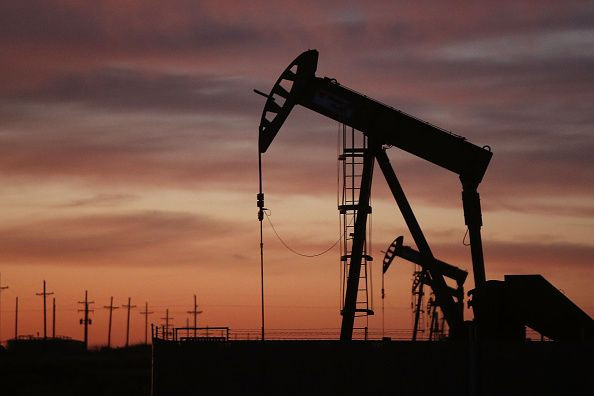Oil Prices: It Took Bears Just 12 Days to Maul 12-Month Gains

For a year and a half, crude oil had been in a bull market. What started quietly last summer gained steam this fall, fueled by increasing worries that oil demand could outplace supply due to production issues in places like Venezuela, as well as the threat of powerful new U.S. sanctions on Iran. From the start of that long general upsurge in June 2017 to its peak in October, crude prices had risen by about 75%.
This article originally appeared in the Motley Fool.
That bull market, however, has met a violent end: Crude oil prices have tumbled in each of the last 12 trading days, which is a record losing streak for the commodity. Overall, crude has plummeted more than 20%, which officially puts it in bear market territory, and wipes out all of its gains over the last year.
Drilling down into what happened to oil prices
One big driver of oil prices during recent months was the threat of U.S. sanctions on Iran, which would have severely hindered its ability to export oil. Traders worried that much of Iran's supply would come off the market if President Trump took a hard line on the regime in Tehran. Some analysts believed that if all nations cooperated with those sanctions, it would remove as much as 2.5 million barrels of oil per day (BPD) from the global supply, which could have pushed crude prices back into triple digits if supply issues emerged elsewhere.
At the last minute, however, the U.S. granted waivers to several of Iran's key customers, including India and China. Because of that, the market's fears that oil supplies would tighten significantly vanished nearly overnight. Instead, it's now concerned that there might be an oversupply of oil, given that other producers ramped up their output to compensate for the anticipated loss of Iranian crude.
OPEC says: We told you so
While the sudden shift caught most oil market watchers off guard, the drop-off is exactly what OPEC had warned could happen. The organization's leaders had warned that fears of a supply crunch were getting blown out of proportion because observers were too focused on Iran, and paying too little attention to conditions elsewhere. As OPEC emphasized in its most recent report, "although the oil market has reached a balance now, the forecasts for 2019 for non-OPEC supply growth indicate higher volumes outpacing the expansion in world oil demand, leading to widening excess supply in the market."
In OPEC's view, crude oil production from nonmember nations is on pace to expand by 2.23 million BPD in 2018, which is 120,000 BPD higher than its previous forecast. Those growing supplies are arriving on the market at a time when the demand growth forecast is going in the opposite direction. While OPEC now says it expects oil demand to rise by 1.29 million BPD next year, that's 70,000 BPD below last month's forecast, and even further below its July projection of 1.45 million BPD growth for 2019.
OPEC members are working to address that potential oversupply issue; they've been debating a move to slash their total production by up to 1.4 million BPD. That would reverse an earlier policy decision to pump an additional 1 million BPD to offset some of the anticipated losses from Iran. However, it's not yet clear if the group's membership will come to an agreement on cuts. Because of that, prices will likely remain volatile, especially if demand growth continues decelerating.
What this means for oil stocks
The recent plunge in oil prices has naturally put pressure on most oil stocks. Shares of U.S. drillers Devon Energy (NYSE:DVN), Pioneer Natural Resources (NYSE:PXD), and Marathon Oil (NYSE:MRO), for example, are all off by around 30% from their recent highs.
This situation, however, is not entirely bad for them. On the positive side, companies like Devon Energy and Marathon Oil currently have stock repurchase programs underway. With their stock prices lower than they've been in half a year, they can now retire a larger percentage of their outstanding shares.
On the other hand, this plunge in crude prices will cut into their cash flows, which could force them to reconsider their spending plans for 2019. In Devon's case, it previously said it would boost spending from $2.4 billion this year up to a range of $2.4 billion to $2.7 billion in 2019, which could enable it to grow its U.S. oil output by 15% to 19%. Now, it might rein in those expectations. Pioneer Natural Resources, meanwhile, boosted its 2018 budget from $2.9 billion to $3.4 billion when oil prices were rising. However, Pioneer might not be able to spend at that level in 2019, since it represents all of its expected cash flow for this year.
Fading optimism could shift spending plans
Oil companies were growing increasingly optimistic about the oil market until a few weeks ago. However, that bullishness is starting to evaporate. That could cause them to rethink their plans, and induce some of them to allocate more money toward buying back stock, rather than drilling additional wells, which has the potential to create more shareholder value in the long run.
Matthew DiLallo has no position in any of the stocks mentioned. The Motley Fool has no position in any of the stocks mentioned. The Motley Fool has a disclosure policy.





















